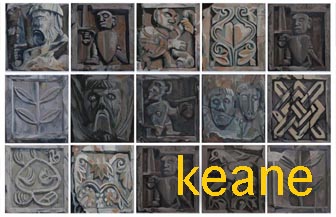[one_half]The deadline is fast approaching for one of the most controversial — and agonising — challenges in the Serchio Valley since World War Two. Sometime in the next several months, a decision could be reached on the fate of an immense waste incinerator proposed for the industrial zone of Fornaci di Barga.
At stake in this decision is the region’s future in almost every way imaginable: its health, its economy, its way of life.
The 60-million-euro incinerator, which is to be built on the grounds of the Fornaci copper plant operated by KME, a German-based multinational with majority Italian ownership, employs a new technology known as pyro-gasification. Its purpose is to transform an estimated 100,000 tons tons of pulp waste from the valley’s paper mills each year into electrical power. KME is among the world’s leading manufacturers of copper and copper alloy products, with operations in Germany, France, Italy, Spain, China and the United States.
Its executives maintain that the procedure will be a pollution-free model of environmental diligence. They predict that its electrical output will fuel an increase of annual copper production in Fornaci from the current 55,000 tons to 90,000 tons, and dramatically increase the plant’s competitiveness in the global market.
If these claims are accurate, everyone in the Serchio Valley stands to gain. KME’s production costs in Fornaci could decline by 33 percent with the in-house generation of 10-12 megawatts of electricIty, a critically expensive factor in copper manufacturing. That would ease longstanding fears among 600 local workers here that the facility might otherwise be shut down, with devastating financial consequences for 2,000 local residents (the equivalent of 20 percent of Barga’s population) who depend on KME salaries for their livelihoods. It would also inflict serious collateral damage on the economy of the entire area.
The problem, according to a broad consensus of scientists and medical experts, is that the project rests on an enormous gamble. Put simply, they say, the technology employed by the incinerator — which burns solid waste at extremely high temperatures in an oxygen-depleted container, converting it to a combustible gas and powdery material residue — has never been successfully tested on the scale proposed in Fornaci. In effect, the people of Barga and the Garfagnana would be de facto subjects in an industrial experiment, which may reap extraordinary benefits if it works. But if it fails, the impact could be catastrophic.
Experiences elsewhere are not encouraging. To date, almost every commercial implementation of gasification technology has encountered major financial or engineering setbacks. In 2016, one of the largest of these projects, in northeastern England’s Tees Valley, was cancelled with losses approaching one billion euros. A similar facility in Karlsruhe, Germany, lost more than 400 million euros in five years of operation. [/one_half][one_half_last]
A more daunting worry lies in health risks. There is virtually no reliable data on the new technology’s potential for toxic side-effects. But there is ample reason for concern. One ton of paper waste yields approximately three tons of combustion gas, ten percent of which is a powdery composition called “ultrafine particulate” that is nearly invisible to the naked eye. The particulate ash released by incinerated pulp from paper recycling mills, such as those in the Serchio Valley, may contain dioxins, lead, arsenic, mercury, and heavy metals. All are severely toxic, known to trigger profound genetic damage as well as cancers and other grave maladies.
Waste disposal experts warn that adequate equipment is not yet available to provide continuous monitoring of pyro-gasification operations, or to fully block particulate emissions in an industrial-scale setting.
For these and other reasons, the European Union strongly discourages the use of incineration of any sort in waste disposal. With a few rare exceptions, no new incinerators have been launched anywhere else in Europe over the past two decades.
Of special concern to Barga and its neighbours is the area’s pronounced thermal inversion, produced by the confrontation of warm lowland temperatures with cool mountain winds in the Apennine and Apuan Alp chains that frame the Serchio Valley. The same conditions that hold its celebrated fogs almost motionless over Fornaci until late morning would apply to incinerator emissions. They would gather, cloud-like and motionless, until just before noon on a sunny day — at which point ultrafine particulate ash would begin falling unimpeded into residential districts.
KME has been notably loathe to share more than minimal information about the project with the general public. In June, a gathering was held in Fornaci to explain some of the details. But it was strictly limited to workers and KME officials, with outsiders and most news media representatives barred.
It is clear, by any measure, that there are no “outsiders” in the debate over pyro-gasification and the Fornaci plant’s fate. So far, however, the company has only issued vague statements regarding meetings aimed at the larger community, possibly in the first weeks of August, a period in which a huge percentage of Italians are away on holiday.
— Frank Viviano
All the articles from the 8 times Pulitzer Prize nominated journalist/ best selling author and barganews staff reporter Frank Viviano can be seen here
[/one_half_last]





